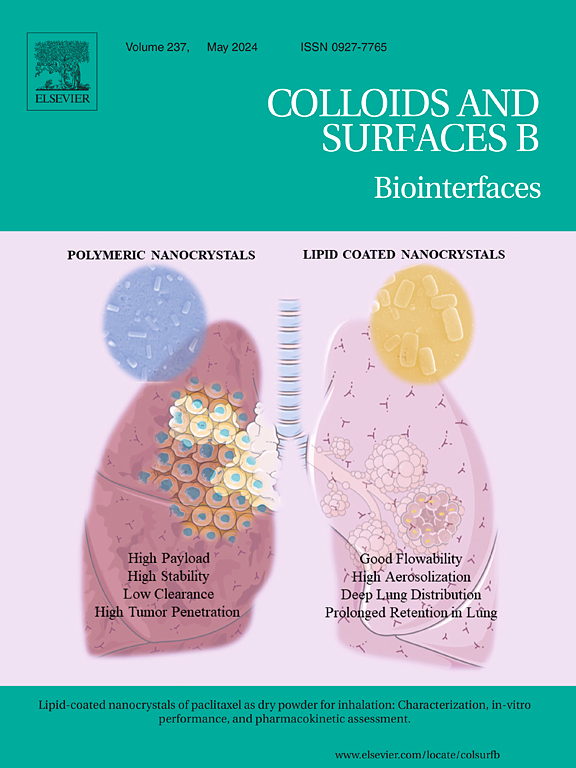Role of chemical groups in regulating membrane tension of mBMSCs under stretch stimulation
IF 5.4
2区 医学
Q1 BIOPHYSICS
引用次数: 0
Abstract
As a crucial mechanobiological regulator, the tension of the cell membrane plays a vital role in governing cellular adhesion, proliferation, and differentiation processes. Additionally, it displayed a dynamic response to mechanical microenvironmental changes. This research systematically examines the mechanoresponsive behaviors of mouse bone marrow mesenchymal stem cells (mBMSCs) that are cultured on poly(dimethylsiloxane) (PDMS) substrates which are functionalized with methyl (-CH3), amino (-NH2), and carboxyl (-COOH) groups. Under both static and stretching conditions, it is found that compared with the -CH3 surface, static culture on the -NH2 and -COOH functionalized surfaces significantly promotes the proliferation of mBMSCs and upregulates the expression of extracellular matrix adhesion-related genes, especially focal adhesion kinase (FAK) and integrin β1. Morphometric analysis reveals that there are concomitant increases in the cell spreading area and the number of pseudopods on these modified surfaces. Mechanical stretching stimulation not only amplifies these cellular responses but also leads to more uniform FAK distribution. The assessment by atomic force microscopy (AFM) shows that both chemical functionalization (-NH2/-COOH) and stretch stimulation reduce the deformability of the cell membrane, and the -NH2 modification exhibits a greater membrane-stiffening effect than -COOH.
求助全文
约1分钟内获得全文
求助全文
来源期刊

Colloids and Surfaces B: Biointerfaces
生物-材料科学:生物材料
CiteScore
11.10
自引率
3.40%
发文量
730
审稿时长
42 days
期刊介绍:
Colloids and Surfaces B: Biointerfaces is an international journal devoted to fundamental and applied research on colloid and interfacial phenomena in relation to systems of biological origin, having particular relevance to the medical, pharmaceutical, biotechnological, food and cosmetic fields.
Submissions that: (1) deal solely with biological phenomena and do not describe the physico-chemical or colloid-chemical background and/or mechanism of the phenomena, and (2) deal solely with colloid/interfacial phenomena and do not have appropriate biological content or relevance, are outside the scope of the journal and will not be considered for publication.
The journal publishes regular research papers, reviews, short communications and invited perspective articles, called BioInterface Perspectives. The BioInterface Perspective provide researchers the opportunity to review their own work, as well as provide insight into the work of others that inspired and influenced the author. Regular articles should have a maximum total length of 6,000 words. In addition, a (combined) maximum of 8 normal-sized figures and/or tables is allowed (so for instance 3 tables and 5 figures). For multiple-panel figures each set of two panels equates to one figure. Short communications should not exceed half of the above. It is required to give on the article cover page a short statistical summary of the article listing the total number of words and tables/figures.
 求助内容:
求助内容: 应助结果提醒方式:
应助结果提醒方式:


